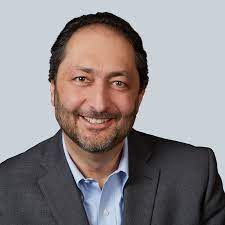Second Generation DAA Agents Have Increased Hep C Treatment Globally
A new study from AASLD 2023 provides a snapshot of how the introduction of second-generation direct-acting antivirals on treatment patterns for hepatitis C.
Homie Razavi, PhD
Credit: CDA Foundation

An analysis of global data is providing hepatologists and other care providers insight into how the introduction of second-generation direct-acting antivirals has impacted the treatment of hepatitis C virus.
Presented at The Liver Meeting 2023 from the American Association for the Study of Liver Diseases, results of the study demonstrate the addition of next-generation direct-acting antivirals has contributed to increased uptake of hepatitis C treatments, with this impact most apparent in low- and middle-income countries.
“For the global elimination of [hepatitis C virus] there needs to be a continued exponential increase in cumulative treated patients in [low- and middle-income countries] along with continued expansion of generic access to medications,” investigators wrote.
The most common chronic viral infection found in blood among people in the US, hepatitis C virus represents a challenge for management as well as for public health systems. The National Institutes of Health estimate the prevalence of chronic hepatitis C to be between 2.7 to 3.9 million people in the US, with this figure increasing since 2006. According to recent estimates, the economic burden of chronic hepatitis C might exceed $10 billion annually in the United States alone.2,3
From 2011 through 2016, the community witnessed an explosion in new therapies, with 10 different agents receiving an indication for at least 1 genotype of hepatitis C during the period. To the chagrin of the medical community, a common theme in healthcare is a notable lag between the introduction of new therapies and optimal uptake.2
In the current study, a team led by Homie Razavi, PhD, founder and managing director at the Center for Disease Analysis Foundation, and colleagues sought to determine how the advent of these second-generation direct-acting antiviral treatments might have impact the treatment of hepatitis C virus. With this in mind, investigators designed their study as an analysis of data from multiple national databases, drug sales data, government reports, reporting from treatment centers, and drug supplier reports.1
For the purpose of analysis, investigators specifically sought data related to treatment-receiving regimens including sofosbuvir, ombitasvir/paritaprevir/ritonavir-, glecaprevir/pibrentasvir- , and elbasvir/grazoprevir-based treatments.1
Overall, investigators identified 13.2 million patients with hepatitis C who had been treated with direct acting antivirals between 2014 and 2022. Among this cohort, 10.9 million were treated with sofosbuvir-based regimens, which accounted for 82% of all hepatitis C virus treatments. The most dominant form of direct-acting antiviral treatment was generic sofosbuvir/daclatasvir.1
Investigators pointed out 89% of all hepatitis C virus infections included in the study occurred in low- to middle-income countries, with just 3.7 million treatments occurring in high-income countries. Investigators also pointed out the peak percentage of sofosbuvir-based regimens observed in 2019 was the result of substantial uptake in hepatitis C virus treatment in the Egyptian elimination program. Following this peak in 2019, an increase in use of other direct-acting antivirals was observed, with the number of patients treated rising from 1.6 million in 2019 to 2.4 million in 2022.1
“With 89% of all [hepatitis C virus] infections in [low- and middle-income countries], immediate access to generic versions of the latest drugs is needed to achieve the global elimination targets. The high-income countries have been very proactive in treating their [hepatitis C virus] infected populations and removing all restrictions,” investigators added.1
References:
- Voeller A, Razavi-Shearer D, Gamkrelidze I, Razavi-Shearer K, Blach S, Razavi H. Total HCV patients treated with direct acting antivirals since 2014. Paper Presented at: AASLD The Liver Meeting, November 10-14, 2023. Accessed November 21, 2023.
- Hepatitis C - NIDDK. National Institute of Diabetes and Digestive and Kidney Diseases. Accessed November 21, 2023. https://www.niddk.nih.gov/health-information/liver-disease/viral-hepatitis/hepatitis-c.
- Geddawy A, Ibrahim YF, Elbahie NM, Ibrahim MA. Direct Acting Anti-hepatitis C Virus Drugs: Clinical Pharmacology and Future Direction. J Transl Int Med. 2017;5(1):8-17. Published 2017 Mar 31. doi:10.1515/jtim-2017-0007